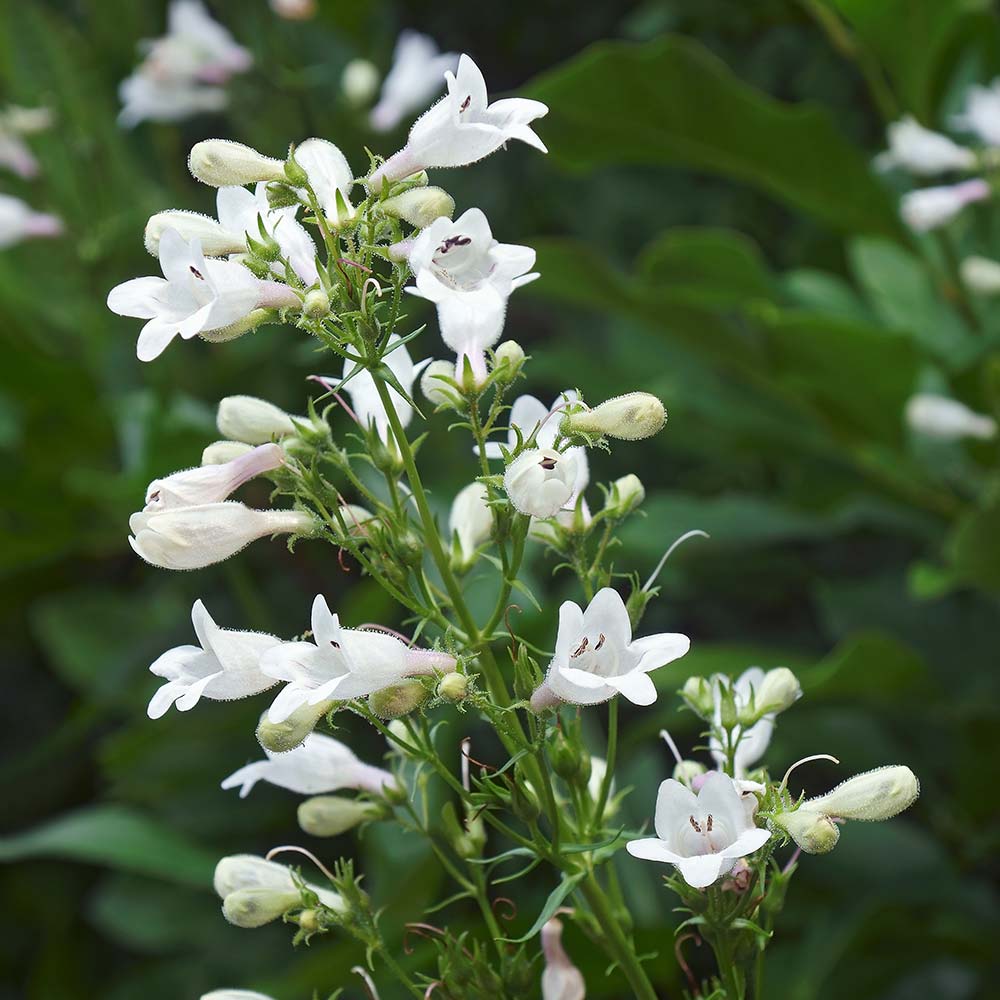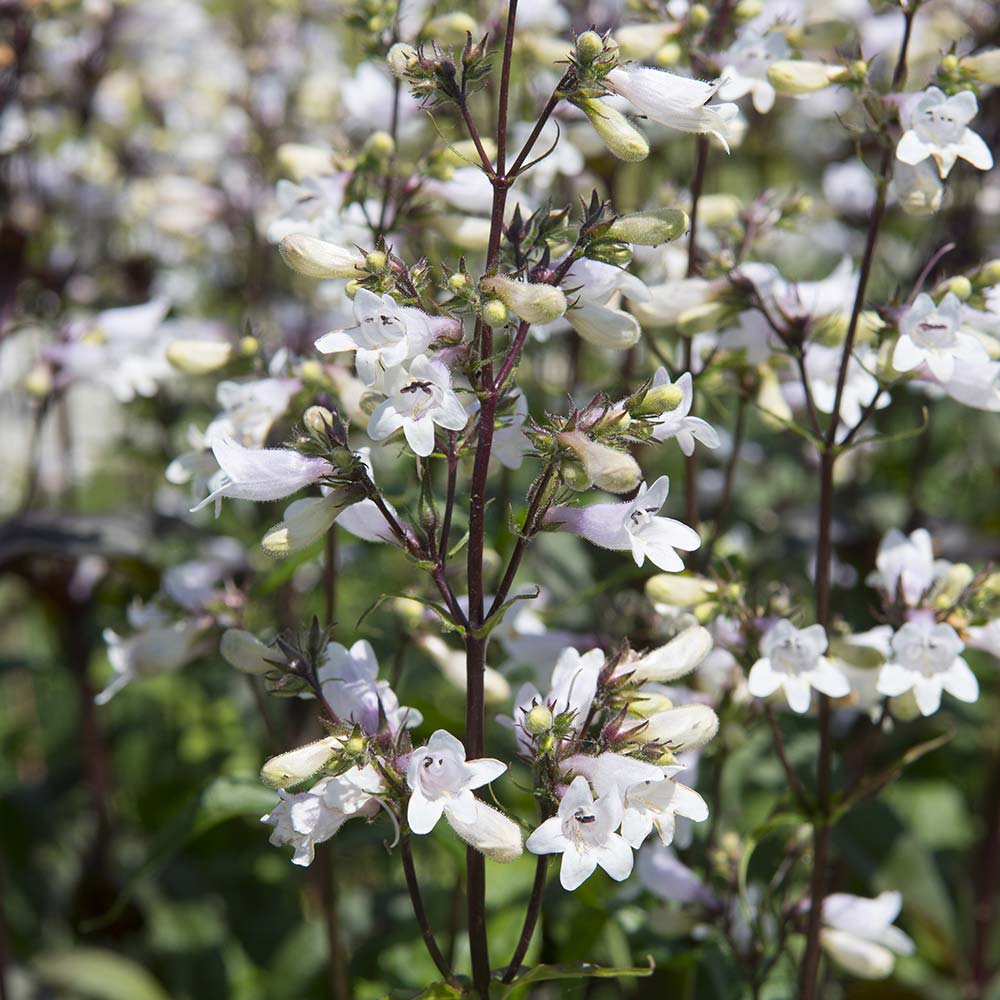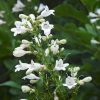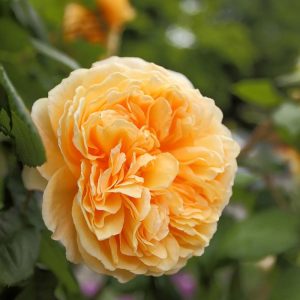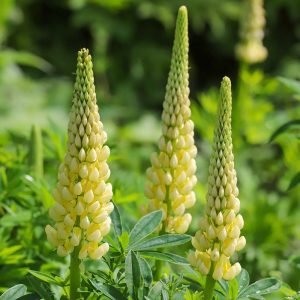Description
Penstemon is a large genus of flowering plants that includes around 250 species, many of which are native to North America. They are herbaceous perennials with showy tubular flowers that come in a range of colors, including pink, purple, blue, red, and white. Most species are drought tolerant and prefer full sun to partial shade. They are great for attracting bees, and butterflies to the garden. Some popular species of penstemon include Penstemon digitalis (foxglove beardtongue), Penstemon strictus (rocky mountain penstemon), and Penstemon barbatus (scarlet bugler). Penstemons pair well with other sun-loving perennials such as echinacea, rudbeckia, and salvia, as well as ornamental grasses like panicum and miscanthus.
Key Facts
- Common Name(s):Penstemon ‘Husker Red’
- Hardiness:Fully hardy through most of the UK
- How big will I get? Penstemon digitalis ‘Huskers Red’ can grow to a height of 0.8m and a spread of 0.5m.
- Did You Know That:Penstemon are sometimes called beardtongues due to the shape of their flowers?
Plant Calendar
A rough guide to how this plant will change through the year.
| Jan | Feb | Mar | Apr | May | June | July | Aug | Sept | Oct | Nov | Dec | |
| Flowering Time | 
| 
| ||||||||||
| Foliage Colour |  |
 |
 |
 |
 |
 |
 |
 |
 |
 |
 |
 |
| J | F | M | A | M | J | J | A | S | O | N | D |

| 
| ||||||||||
 |
 |
 |
 |
 |
 |
 |
 |
 |
 |
 |
 |
Care Guide

Soil Requirements
Penstemon digitalis ‘Huskers Red’ prefers soil with good drainage and does not tolerate standing water. This plant can grow in soil with a wide range of pH levels, it is not picky about the pH level of the soil.

Best Position
Penstemon digitalis ‘Huskers Red’ can handle either an exposed or a sheltered position and requires full sun to thrive, this consists of more than six hours of direct sunshine per day.

Maintenance
Penstemon digitalis ‘Huskers Red’ will benefit from deadheading after it finishes flowering this will help the plant by redirecting energy from seed production to flower and root production.

Pest, Diseases and Wildlife
Penstemon digitalis ‘Huskers Red’ can have problems with slugs, snails and aphids, it can be vulnerable to certain diseases such as grey mould, powdery mildew and leaf spot. It is also known to attract bees. It is not considered to be toxic.
